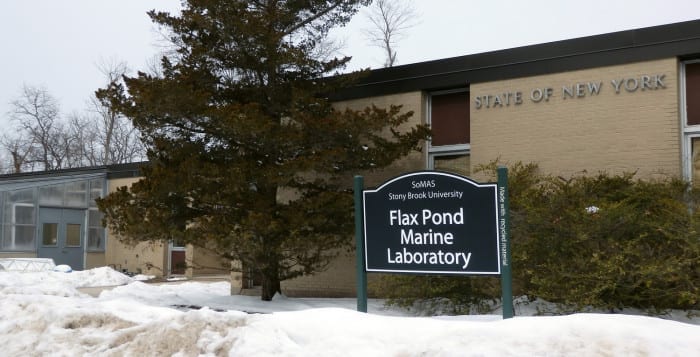In winters like this one, most people focus on the weather for the day or week. That’s not the case for Minghua Zhang, who is much less concerned about whether to buy more salt for the next snowstorm than he is about global changes in the weather over the last 100 years.
The dean of the School of Marine and Atmospheric Sciences at Stony Brook University, Zhang studies weather around the globe, exploring changes in temperature, precipitation, clouds, convection and atmospheric and oceanic circulations.
Working with a team of scientists from Britain, Switzerland and Germany, Zhang recently discovered that the industrial revolution has had severe consequences in the northern tropics in the Atlantic.
Zhang, who worked with graduate student Tingyin Xiao on the study, said precipitation in that area decreased by 10 percent in the last 100 years. This decrease could have implications for farming in Central America, experts said.
“These findings may help to reveal shifts in seasonal rainfall in Central America, which is critical for agriculture in the area and may, therefore, have potential impacts on agricultural and environmental policies in the region,” wrote Provost Dennis Assanis in response to emailed questions.
Zhang said sulfate aerosols in the atmosphere moderated temperatures in the northern hemisphere by reflecting radiation from the sun. This shifted the intertropical convergence zone, which is a tropical rainfall belt near the equator, toward the southern hemisphere.
Led by Harriet Ridley from the Department of Earth Sciences at Durham University in the United Kingdom, the scientists published their work in the journal Nature Geoscience.
Zhang addressed the challenge of predicting or understanding global patterns even as computer models, which are at the center of predicting and understanding weather, raised alarms in New York City for a record-breaking blizzard that never came.
“The fluid system is chaotic,” he suggested, “which prevents a deterministic prediction with long lead time.”
The predictive ability of the model for approaching storms are limited by the computing power to resolve key processes, the lack of understanding of turbulence and condensed water processes, such as ice crystal aggregation and the lack of sufficient data in remote areas, such as over the ocean.
“In the short term, the weather is chaotic and there is a limit” to how well these models predict the movement of approaching storms, he said.
More broadly, Zhang, whose research contributed to the Nobel Peace Prize in 2007 headlined by former Vice President Al Gore, said his research goal is to improve global climate models.
“We have uncertainties in the models, especially those related to clouds,” Zhang said.
Indeed, despite advances in technology, computers are still not powerful enough to resolve large cloud systems, he said. The current fastest computer in the United States can do about 27,000 trillion calculations per second, he said, which is the equivalent of the speed of about one million desktop PCs. That only resolves the climate in units that are about 25 kilometers apart.
Zhang said the scientific understanding of liquid clouds is much better than before, but the knowledge of ice clouds in a turbulent environment is “still not sufficient.”
When he’s not conducting research, Zhang oversees a school that has 120 faculty and staff, with about 150 graduate students and 350 undergraduates.
While the Ph.D. program is ranked sixth in the category of marine and atmospheric sciences by the National Research Council, Zhang wants to continue to move up the ladder. He also wants to improve the teaching at Stony Brook and has put the syllabus for all the courses on the website and urges all faculty to be involved in advising undergraduate students.
Zhang has established a faculty mentoring program that allows junior faculty to receive tips from senior faculty.
Zhang “has helped to grow the school” of faculty that are “working together to better understand how our marine, terrestrial, and atmospheric environments function and are related to one another,” Assanis explained in an email. “The current expertise [at the school] places them in the forefront in addressing and answering questions about immediate regional problems, as well as long-term problems relating to the global oceans and atmosphere.”
Zhang and his wife Ying live in East Setauket, where they raised their daughters Grace, who is studying art at Brown University, and Harley, who works for the Singapore branch of a consulting firm based in New York.
Born and raised in China, Zhang said that, in his rare free time, he enjoys visiting the beaches through all the seasons.
As for his work, Zhang finds his role as the dean of the school and as a researcher rewarding. In his research, he focuses on “improving the mathematical formulas that go into the models.”











